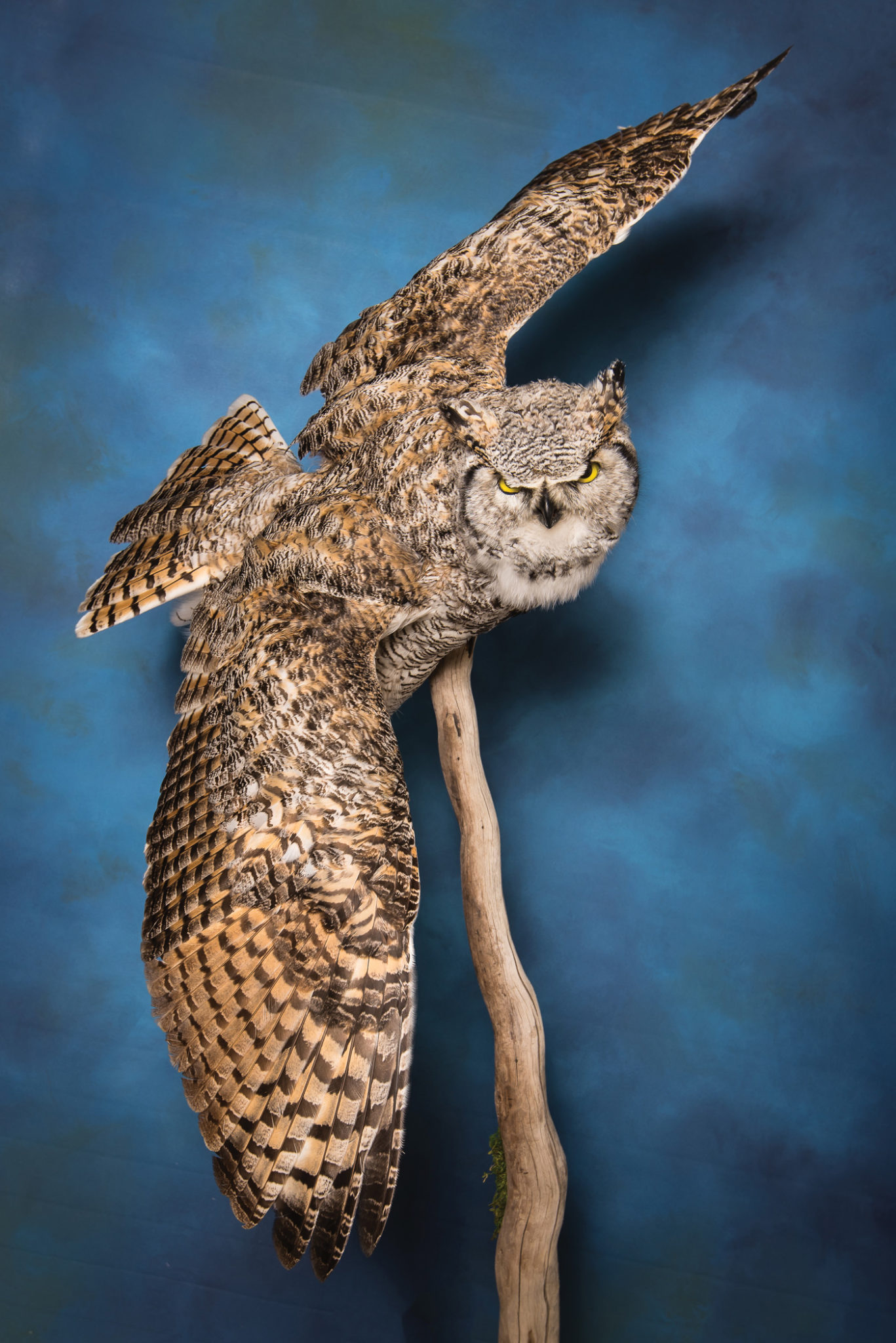
Taxidermy isn’t just for hunters — museums, scientists and pet owners all have an appreciation for this occasionally macabre art form. Perry Steinhilber, the owner-operator of Cougar’s Den Taxidermy in Calgary, gave us some insight into the process of giving deceased animals a second life as objects of fascination
How did he get into it?
“It all started with roadkill,” Steinhilber says. He worked on cleaning and preserving skulls and skeletons before moving into full-on taxidermy, teaching himself the skills without any formal instruction.
Who are his clients?
Steinhilber creates mounts (stuffed skins) and skeletal displays for private clients including hunters and owners of deceased pets. He also helps meet the unique needs of museums and scientific organizations such as Parks Canada, Banff Park Museum, the Royal Tyrrell Museum and the Guyana National Museum, for whom he hunted a common species of butterfly and taught taxidermy skills to the staff. He has also worked for world-renowned hunter Jim Shockey, who operates the Hand of Man Museum of Natural History, Cultural Arts & Conservation in Maple Bay, B.C.
What’s the process?
Taxidermy begins with fleshing, also known as skinning, where skin, fat and other tissues between the skin and bones are removed. This is the messiest part of the process and even a small mistake can impact the final result. Though fleshing is time-consuming, the tanning process takes much longer — up to several months. Finally, the tanned skin is formed. This is when the stuffing (or what those in the business call “mounting”) and setting takes place. A big project like a life-size mount of a bear can take up to two years.
His biggest project?
Steinhilber created a stuffed rhino for the Calgary Zoological Society, working with only parts of the animal after relinquishing other pieces to Society scientists for research purposes. He also once created a 600-pound grizzly bear mount (the animal was killed in a collision with a motorcycle) for Alberta Fish and Wildlife.
What he won’t do
“There was one lady who had gangrene in her foot. The hospital removed it and [she kept it]. She brought me her foot and asked me to skeletonize it because she wanted to make it into a doorstopper,” he says. “Well, you know, I draw the line at humans.”
